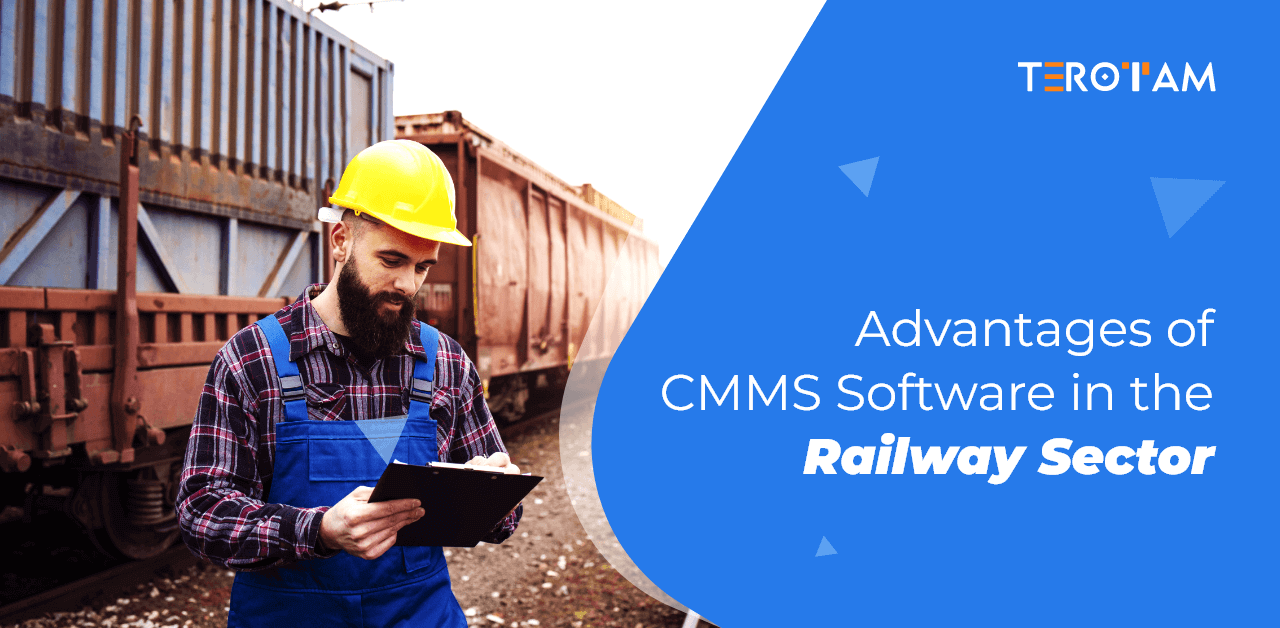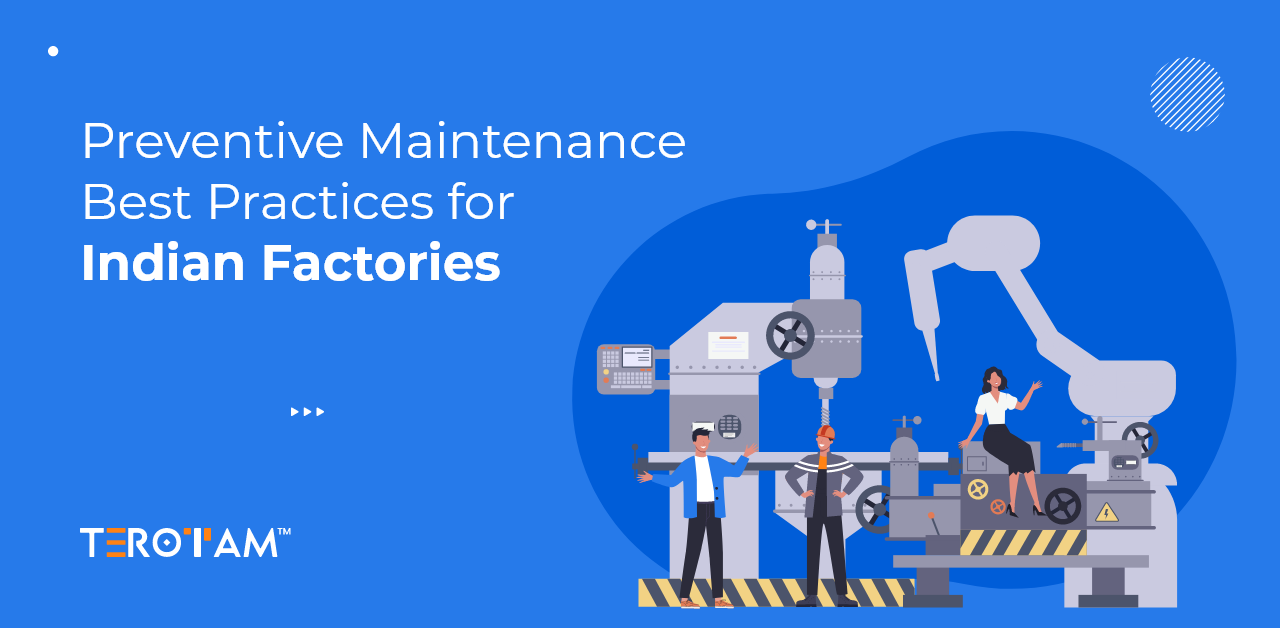CMMS software plays a vital role in railway maintenance because it ensures smooth and efficient operations. With the complexity of railway systems and the many components involved, CMMS is the leading railway asset management software that provides a centralized platform for managing maintenance tasks effectively. It allows for streamlined work order scheduling, tracking, and prioritization, minimizing downtime and maximizing asset availability.
In this blog, you will read about why the CMMS system is an integral part of the railways and how it benefits railway maintenance.
Most Common Challenges facing the Railway Sector
Every sector faces challenges, whether it is the railway or any other business sector. Fortunately, the CMMS solutions like SAP, TeroTAM, and Oracle have been an integral part in helping the majority of businesses to streamline their operations in a secure way.
The railway sector faces various challenges that impact its operations and development. Some of the key challenges include:
Aging Infrastructure
Many railway systems worldwide have aging infrastructure, which requires significant investments for repairs, upgrades, and modernization. Deteriorating tracks, bridges, and signaling systems can lead to disruptions, delays, and safety concerns.
Capacity Constraints
The increasing demand for rail transportation often exceeds the capacity of existing infrastructure. Expanding and improving railway networks to accommodate growing passenger and freight volumes is a major challenge.
Cost and Funding
Building, maintaining, and operating railways require substantial financial resources. Securing adequate funding for infrastructure development, rolling stock procurement, and day-to-day operations is an ongoing challenge for railway companies and governments.
Technological Advancements
The rapid pace of technological advancements presents both opportunities and challenges for the railway sector. Implementing new technologies, such as high-speed trains, intelligent signaling systems, and digitalization, requires significant investments and adapting to evolving industry standards.
Safety and Security
Railway systems must ensure the safety and security of passengers, employees, and infrastructure. Mitigating risks related to accidents, terrorism, cyber threats, and vandalism is a continuous challenge that requires robust safety protocols, surveillance systems, and preventive measures.
Environmental Impact
Railways are generally considered a more environmentally friendly mode of transport. However, further reducing the sector’s carbon footprint and addressing noise pollution, emissions, and energy consumption are ongoing challenges.
Regulatory and Legal Frameworks
The railway sector operates within a complex web of regulations and legal frameworks. Ensuring compliance with safety standards, labor laws, and competition regulations poses challenges for railway companies and requires effective management and adherence.
Integration and Interoperability
Achieving seamless integration and interoperability among different railway networks, systems, and operators is crucial for efficient and seamless operations, especially in cross-border transportation. Overcoming technical and organizational barriers to achieving interoperability remains a challenge.
How does the CMMS solution benefit the railway sector?
Enhanced Maintenance Planning
CMMS allows railway companies to plan and schedule maintenance activities efficiently to provide the best railway facility. It provides a centralized preventive maintenance platform for creating work orders, assigning tasks, and tracking progress. This ensures timely and proactive maintenance, reducing the risk of equipment failures and minimizing downtime.
Improved Asset Management
TeroTAM’s CMMS helps in effectively managing railway assets. It enables maintenance technicians to record and track asset information, including maintenance history, warranties, and specifications. This facilitates better decision-making regarding repairs, replacements, and asset lifecycle management.

Inventory Control and Optimization
It enables railway companies to manage their inventory of spare parts and supplies more effectively. It provides visibility into stock levels, automates reordering processes, and tracks usage. This ensures that the necessary components are available when needed, minimizing equipment downtime and reducing costs associated with excessive or insufficient inventory.
Data-Driven Decision Making
It generates valuable data and analytics regarding maintenance activities, equipment performance, and costs. This information allows railway companies to make data-driven decisions, identify maintenance trends, and optimize maintenance strategies. It also helps in predicting maintenance needs and allocating resources effectively.
Regulatory Compliance
The railway sector operates within strict regulatory frameworks, and CMMS solutions can help ensure safety and maintenance regulations compliance. It allows for accurate record-keeping, documentation of maintenance activities, and tracking of safety inspections and audits. This helps in meeting regulatory requirements and demonstrating adherence to industry standards.
Increased Efficiency and Productivity
By automating routine maintenance processes and providing a streamlined workflow, the CMMS system increases the efficiency and productivity of maintenance teams. Technicians can access work orders, instructions, and equipment history on mobile devices, enabling them to perform tasks more effectively and reducing paperwork.
Cost Savings
CMMS software helps optimize maintenance practices, leading to cost savings for railway companies. It minimizes costly repairs and unplanned downtime by enabling preventive maintenance and reducing equipment failures. Additionally, it assists in better inventory management, reducing excess inventory, and avoiding emergency purchases.
An advanced Computerized Maintenance and Management System (CMMS) specifically designed to efficiently handle and oversee high-value assets. It employs sophisticated analytics to optimize asset performance and prolong their life cycle, resulting in enhanced productivity and cost-effectiveness.
With TeroTAM, businesses can streamline maintenance operations, improve asset management, and foster a more organized and productive work environment.
Conclusion
The implementation of the CMMS solution brings substantial benefits to the railway sector. By streamlining maintenance planning, improving asset management, and optimizing inventory control, businesses can enhance efficiency and productivity. The data-driven insights provided by CMMS software empower railway companies to make informed decisions, allocate resources effectively, and comply with regulatory standards.
Moreover, the cost savings resulting from preventive maintenance, reduced equipment failures, and efficient inventory management contribute to the financial viability of railway operations. Most importantly, CMMS software enhances safety, reliability, and passenger satisfaction by enabling timely maintenance, reducing downtime, and improving overall asset performance.
Embracing the CMMS system equips the railway sector with a powerful tool to navigate maintenance challenges and ensure seamless and efficient railway operations.







